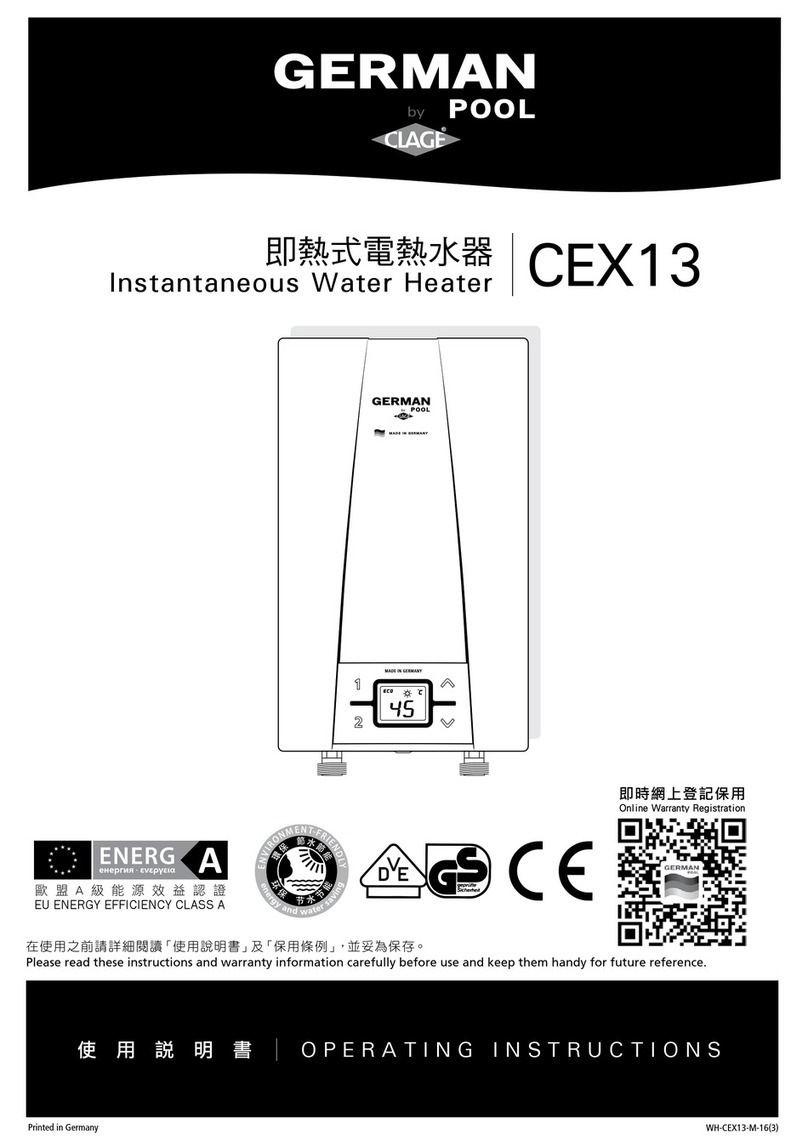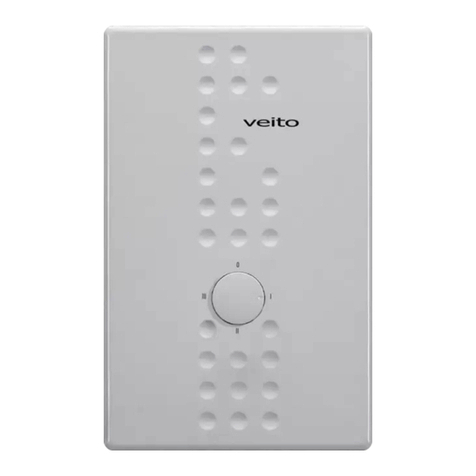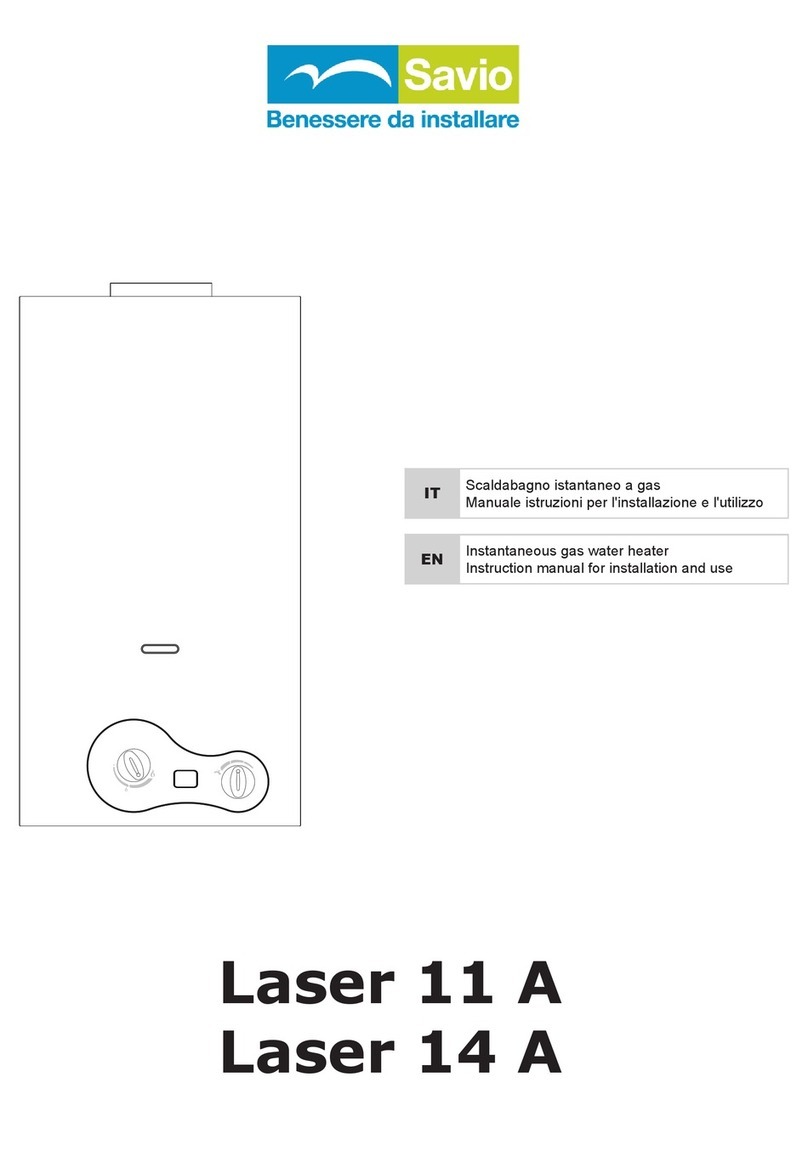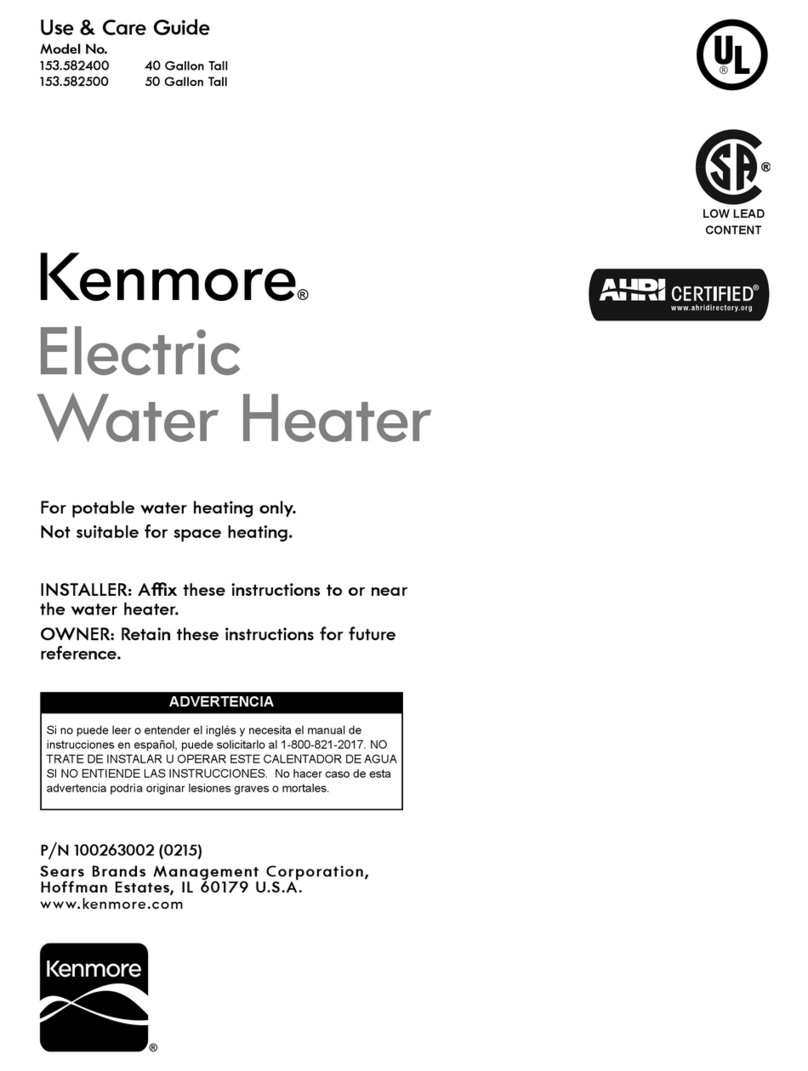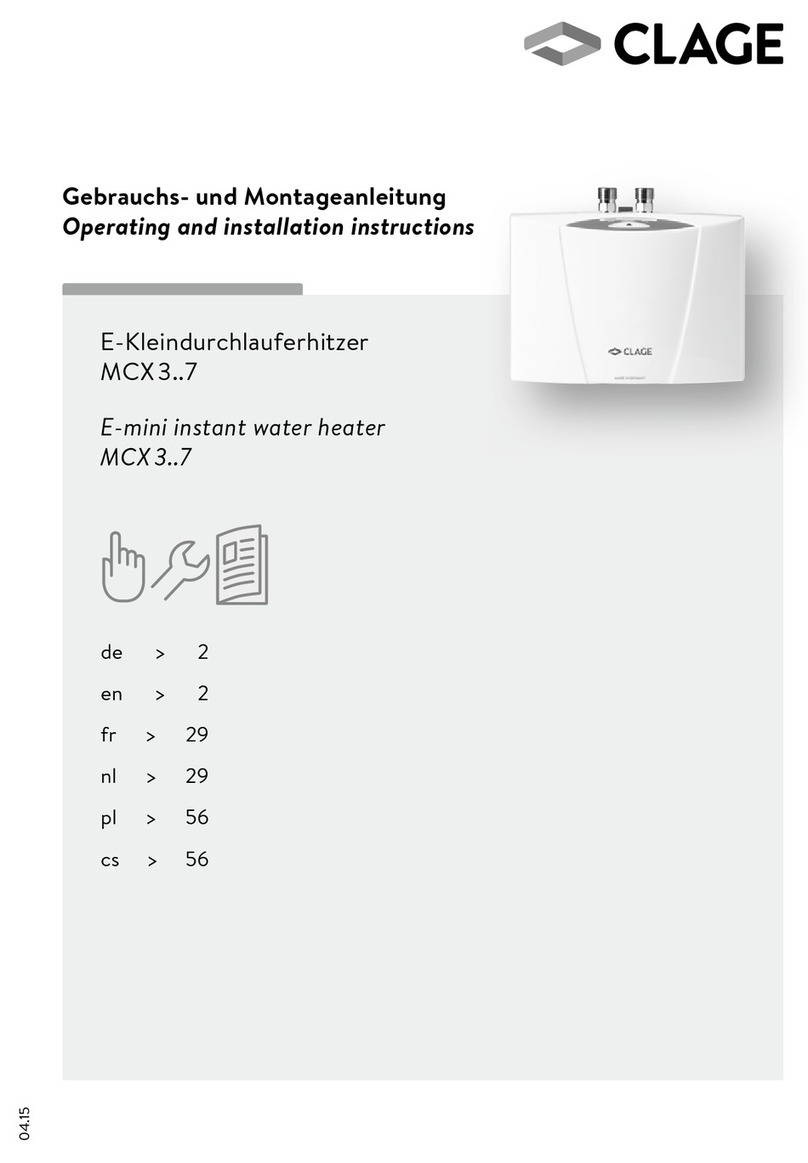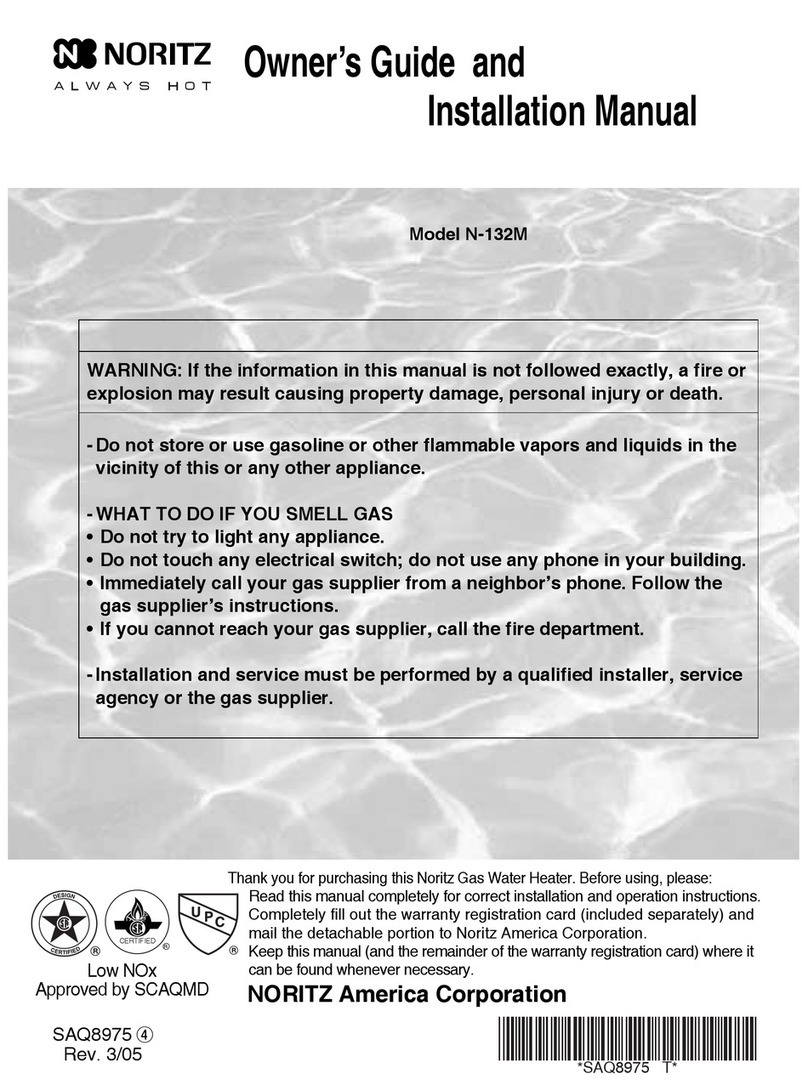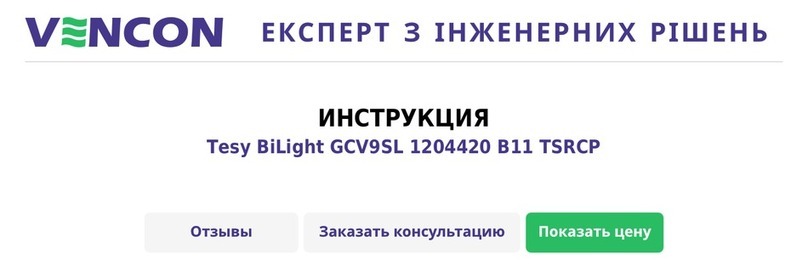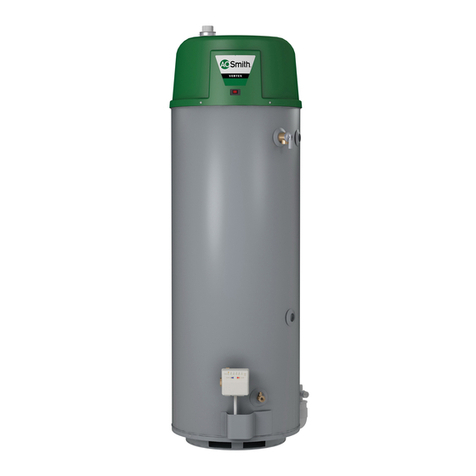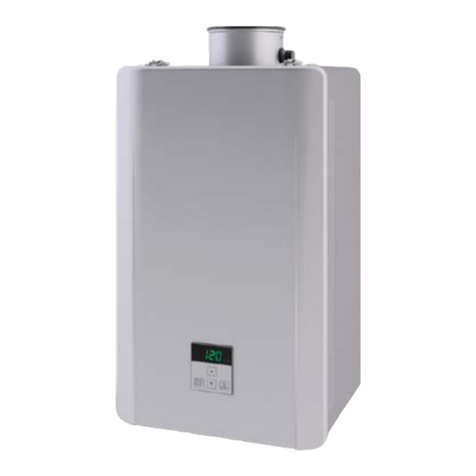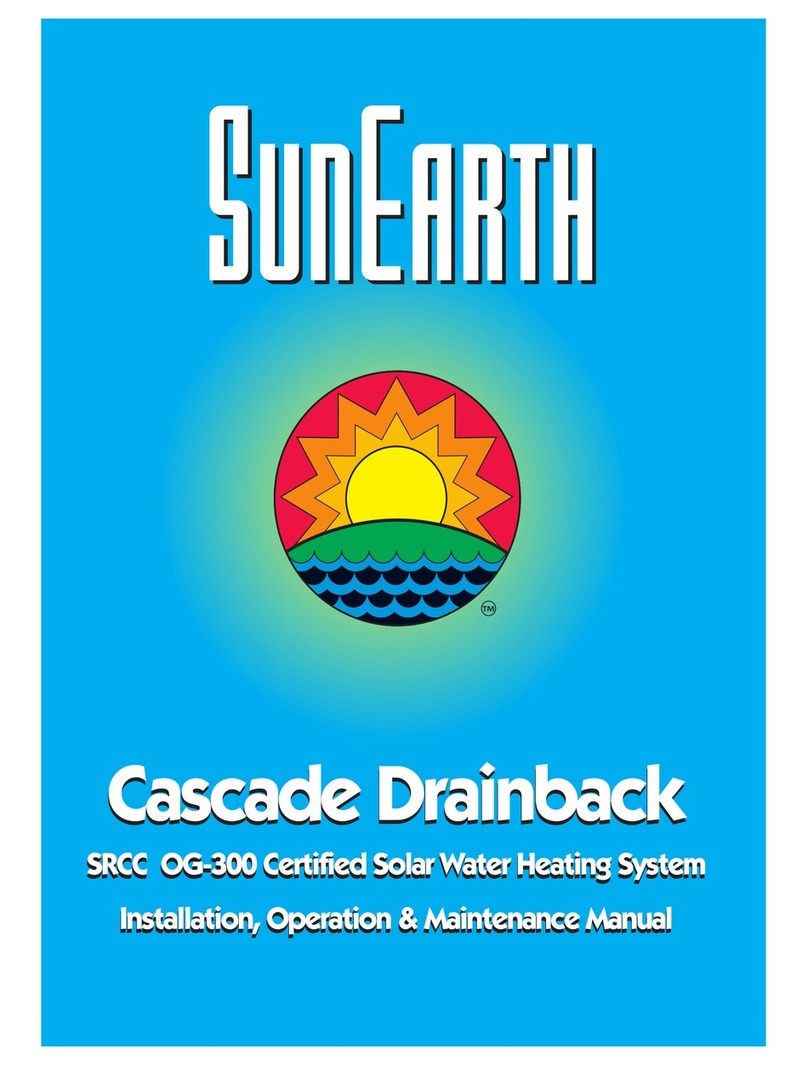
Your SunSiphon solar system is known as an “indi-
rect thermosiphon” system because it utilizes natu-
ral convection of heated fluid to efficiently circulate
the Dow Chemical Dowfrost HD propylene glycol
heat transfer fluid (HTF) through the collectors and
tank heat exchanger. The HTF protects the collector
piping from freezing and inhibits scaling deposits
that can reduce performance in “open-loop” sys-
tems utilizing potable water as the HTF. Proper
application and maintenance of the HTF can protect
your SunSiphon solar water heating system to 15°
Fahrenheit.
This manual is intended as a basic solar water heat-
ing primer. Our goal is to familiarize you with the
proper installation, operation and maintenance of
your SunSiphon system. This system is required
to be installed by properly licensed solar or plumb-
ing contractors in accordance with SRCC Standard
OG-300 and all applicable national, state and local
codes, ordinances and regulations governing solar
water heating systems as well as good trade prac-
tices. Failure to follow the procedures and practices
described in this manual may void the manufac-
turer’s warranty for specific component parts.
This manual covers installations utilizing one or two
SunEarth solar collectors with a single solar storage
tank and also two tank systems that include a solar
storage tank and supplemental tank type or tankless
water heater. For simplicity, the singular form will
be used throughout this manual when referring to
all of these components and system permutations.
Frequent reference is made throughout this manual
to specific component parts. The placement of each
component can be seen in system schematic figures
21 and 22. A description of each component and its
function is found in Section 10.
2)SYSTEM DESCRIPTION AND
OPERATIONAL PRINCIPLE
The SunSiphon system consists of four main com-
ponents. These are the solar collectors, the stainless
steel storage tank with the integral stainless steel
heat exchanger and expansion chamber, and the heat
transfer fluid (HTF). The solar collectors and the
heat exchanger are filled with Dowfrost HD propyl-
ene glycol heat transfer fluid (HTF). The expansion
chamber prevents pressure build up in the collector
loop as the sun heats the HTF. The Dowfrost HD
HTF has a much lower freeze point than water and
protects the solar collectors from freezing. The
stainless steel storage tank is filled with potable
water under mains pressure.
Your SunSiphon system is known as a “passive”
solar water heater because it does not require
mechanical pumps, thermostats or any moving parts
to make hot water. Thermosiphon solar systems
work on the principle of natural convection, or the
fact that heated liquids rise. Solar energy striking
the collectors warms the propylene glycol HTF in
the collector piping causing it to rise into the tank
heat exchanger. The heat energy is then transferred
by conduction to the storage tank heating the potable
water contained inside. The cooler HTF then falls to
the bottom of the solar collector and the process is
repeated.
The SunSiphon storage tank is equipped with an
electrical heating element that can provide hot water
during periods of inclement weather or high use. In
two tank systems the supplemental electric or gas
water heater will provide back-up water heating if
necessary.
Depending upon the season and the hot water load,
the SunSiphon is designed to (1) serve as a pre-
heater to the tank heating element or back-up water
heater, or (2) bypass the solar system and run 100%
on utility energy or conventional fuel. Section 6
this manual explains the normal operation of the
SunSiphon system.
The Dowfrost HTF protects the SunEarth solar col-
lectors in your SunSiphon system against freezing.
Dowfrost can provide reliable freeze protection for
the solar collectors at temperatures as low as -60º
Fahrenheit if properly applied and maintained.
The solar storage tank itself and the piping to and
from the roof are susceptible, however, to freezing
temperatures much higher than -60º F. In order to
protect the integrity of the solar storage tank and
piping the SunSiphon should not be installed in any
area where the ambient air temperature has fallen
below 15º F for 18 consecutive hours.
Use of uninhibited propylene glycol, plain water or
a concentration of these two fluids as the HTF in the
SunSiphon system is prohibited.
3) INSTALLATION REQUIREMENTS -
GENERAL
3.1 The contractor shall obtain all required per-
mits and approvals.
P.2 SUNSIPHON
